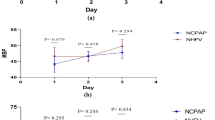Abstract
Premature closure or restriction of foramen ovale (FO) is a rare but known entity. FO diameter <2 mm and Doppler velocity >120 cm/s, diameter <3 mm with Doppler velocity measured gradient >5 mmHg have all being used by various authors to describe this entity. Some neonates with restrictive FO have been noted to have severe pulmonary hypertension with no clinical signs or symptoms and with spontaneous resolution without any intervention. Seven consecutive neonates were indentified in the database between 01/01/2003 and 06/30/2010 with diagnosis of restrictive PFO (diameter <2 mm) with structurally normal heart and their initial and follow-up echocardiogram as well as hospital medical records were reviewed. As a control, seven neonates with diagnosis of pulmonary hypertension and respiratory distress syndrome or meconium aspiration syndrome were randomly selected. Eighty-six percent of the patients in the control group were symptomatic and required treatment as compared to 14% in the restrictive FO group (p = 0.03). Further, the fall in the peak instantaneous pulmonary artery pressure on follow-up echocardiogram was greater in the restrictive FO group compared with the non-restrictive group (p = 0.03). Patients with pulmonary hypertension and a restrictive FO with no other associated congenital heart disease and/or lung pathology behave differently when compared to neonates with non-restrictive FO and pulmonary hypertension with associated lung disease. They seldom manifest symptoms requiring intervention and tend to show a faster drop in their pulmonary artery pressure toward the normal.




Similar content being viewed by others
References
Benner MC (1939) Premature closure of the foramen ovale: report of 2 cases. Am Heart 17:437–443
Birk E, Silverman NH (2009) Intracardiac shunt malformations. In: Yagel S, Silverman N, Gembruch U (eds) Fetal cardiology: embryology, genetics, physiology, echocardiographic evaluation, diagnosis and perinatal management of cardiac diseases 2009. Informa Healthcare USA, New York, pp 284–285
Chobot V, Hornberger LK, Hagen-Ansert S, Sahn DJ (1990) Prenatal detection of restrictive foramen ovale. J Am Soc Echo 3:15–19
Donofrio MT, Bremer YA, Moskowitz WB (2004) Diagnosis and management of restricted or closed foramen ovale in fetuses with congenital heart disease. Am J Cardiol 94:1348–1351
Hagen A, Albig M, Schmitz L, Hopp H, van Baalen A, Becker R, Entezami M (2005) Prenatal diagnosis of isolated foramen ovale obstruction: a report of two cases. Fetal Diagn Ther 20:70–73
Hansmann M, Redel DA (1982) Prenatal symptoms and clinical management of heart disease. Inler symposium. International d’Echocardiologie Foetale, Strasbourg, pp 137–149
Long WE, Wilson AD, Srinivasan S, Seeger KJ, Maginot KR (1990) In utero premature closure of the ductus arteriosus presenting as isolated right ventricular hypertrophy. WMJ 108:370–372
Photiadis J, Urban AE, Sinzobahamvya N, Fink C, Schindler E, Schneider M, Marie Brecher A, Asfour B (2005) Restrictive left atrial outflow adversely affects outcome after the modified Norwood procedure. Eur J Cardiothorac Surg 27:962–967
Schmidt M, Jaeggi E, Ryan G, Hyldebrandt J, Lilly J, Peirone A, Benson L, Chaturvedi RR (2008) Percutaneous ultrasound-guided stenting of the atrial septum in fetal sheep. Ultrasound Obstet Gynecol 2:923–928
Soongswang J, Adatia I, Newman C, Smallhorn JF, Williams WG, Freedom RM (1998) Mortality in potential arteial switch candidates with transposition of the great arteries. J Am Coll Cardiol 32:753–757
Author information
Authors and Affiliations
Corresponding author
Rights and permissions
About this article
Cite this article
Gupta, U., Abdulla, Ri. & Bokowski, J. Benign Outcome of Pulmonary Hypertension in Neonates With a Restrictive Patent Foramen Ovale Versus Result for Neonates With an Unrestrictive Patent Foramen Ovale. Pediatr Cardiol 32, 972–976 (2011). https://doi.org/10.1007/s00246-011-0032-7
Received:
Accepted:
Published:
Issue Date:
DOI: https://doi.org/10.1007/s00246-011-0032-7




